
When managing an organization as a system, there are only a few factors that are important. One of these factors is the effective synchronization of the various activities in the organization. This is valid whether we are talking about production, projects, or any other process.
In TOC (Theory of Constraints), successful synchronization happens when we are able to manage the “Constraint”, or strategic leverage point, appropriately.
The Constraint of the System is the element that determines the pace at which the System generates units of the goal; indeed, any minute lost on the constraint translates into loss of Throughput that we can never recover. Accordingly, the constraint must be protected and the process to protect it is called Buffer Management.
The Buffer has a dual role: protection and control.
In a system that is built around a constraint and where everything is subordinated to that constraint, the buffer protects the constraint from variation that may cause disruption and the conventional way of sizing the buffer is with an amount of time. Essentially, to make sure that the constraint keeps working and never “starves”, we place a buffer of time in front of it so that breakdowns in the system will not affect the working of the constraint.
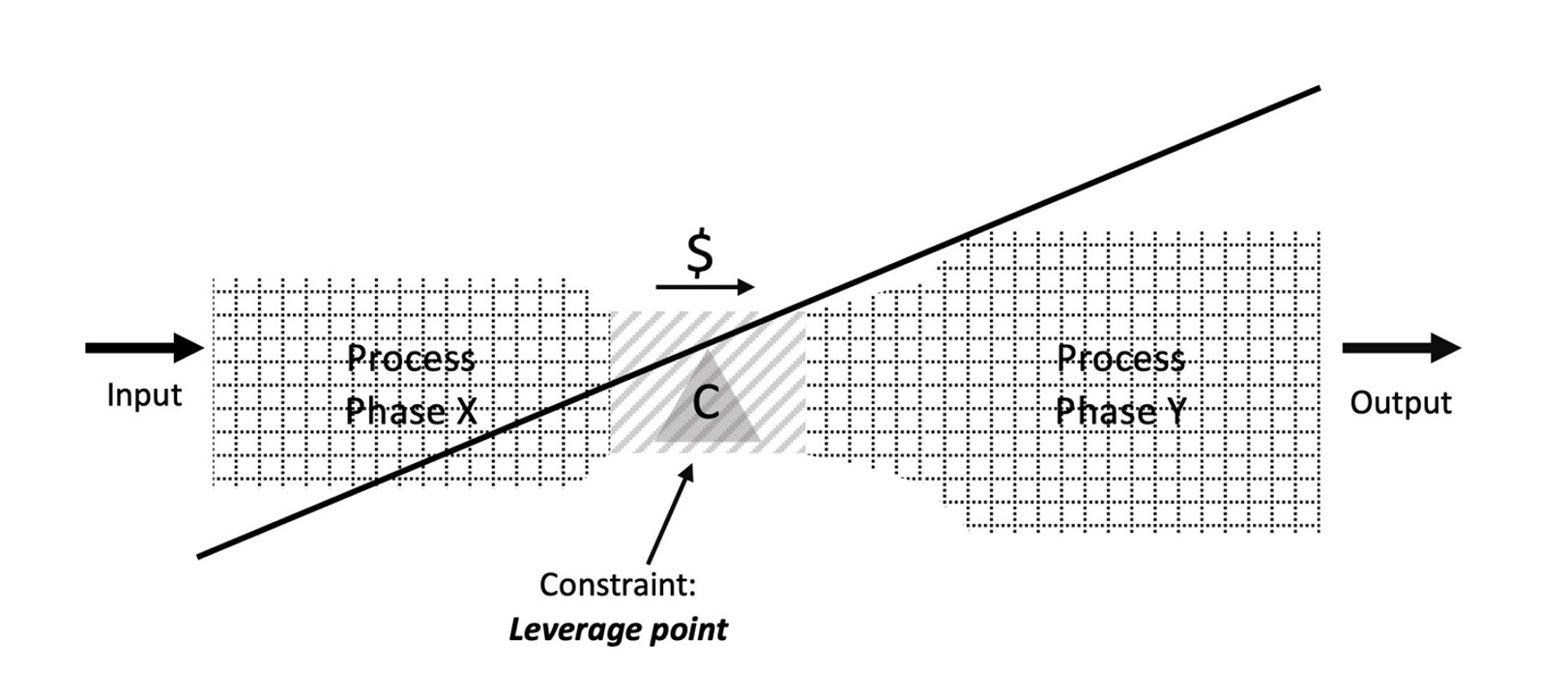
At the same time, we exert control on the System as a whole by statistically monitoring the oscillation of the buffer:
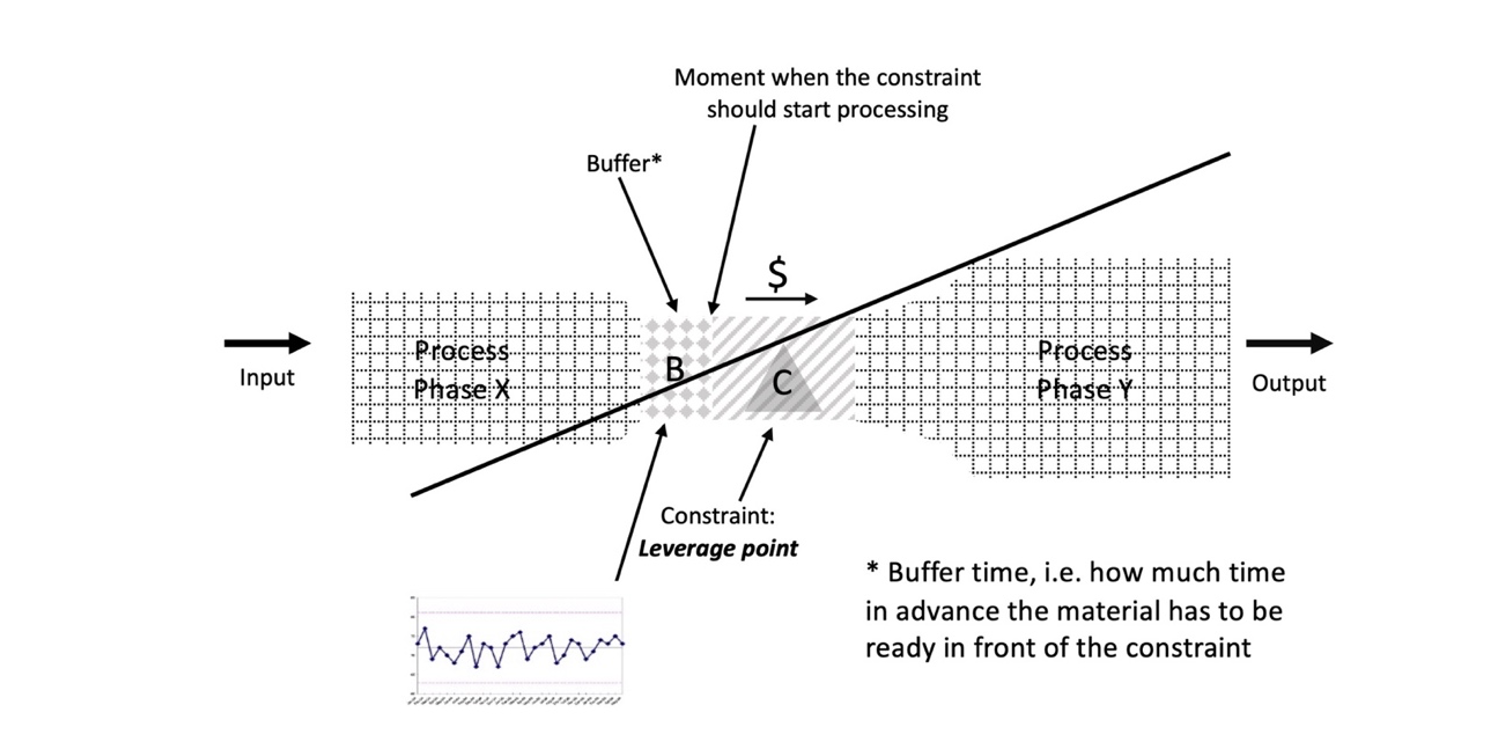
We can easily understand this line of reasoning for a typical production flow: basically, it translates into a “complete batch of material” in front of the constraint, ready to be processed a “buffer time ahead” of the moment when the constraint should start working on it.
Constraint and buffer for projects
This same concept of constraint and buffer can be applied to projects. The constraint of a project is its Critical Chain. Accordingly, how do we protect the critical chain and, at the same time, exert effective control throughout the execution of the project?
A Project is a set of actions required to satisfy specifications (often set by a client), in an established timeframe and within a predefined budget. Project managers inevitably experience the dilemma between adding protection time to the tasks on the critical chain (to avoid being late) versus NOT adding this protection time (to declare a shorter lead time for completion.)
The main assumption upon which this dilemma rests is that all the tasks need protection and, over time, we have come to call this a cognitive constraint, something that can be rationally disproved but persistently lingers in people’s behaviour.
Dr. Goldratt developed the solution (in Theory of Constraints jargon this kind of solution is called an Injection) to this dilemma and named it Project Buffer.
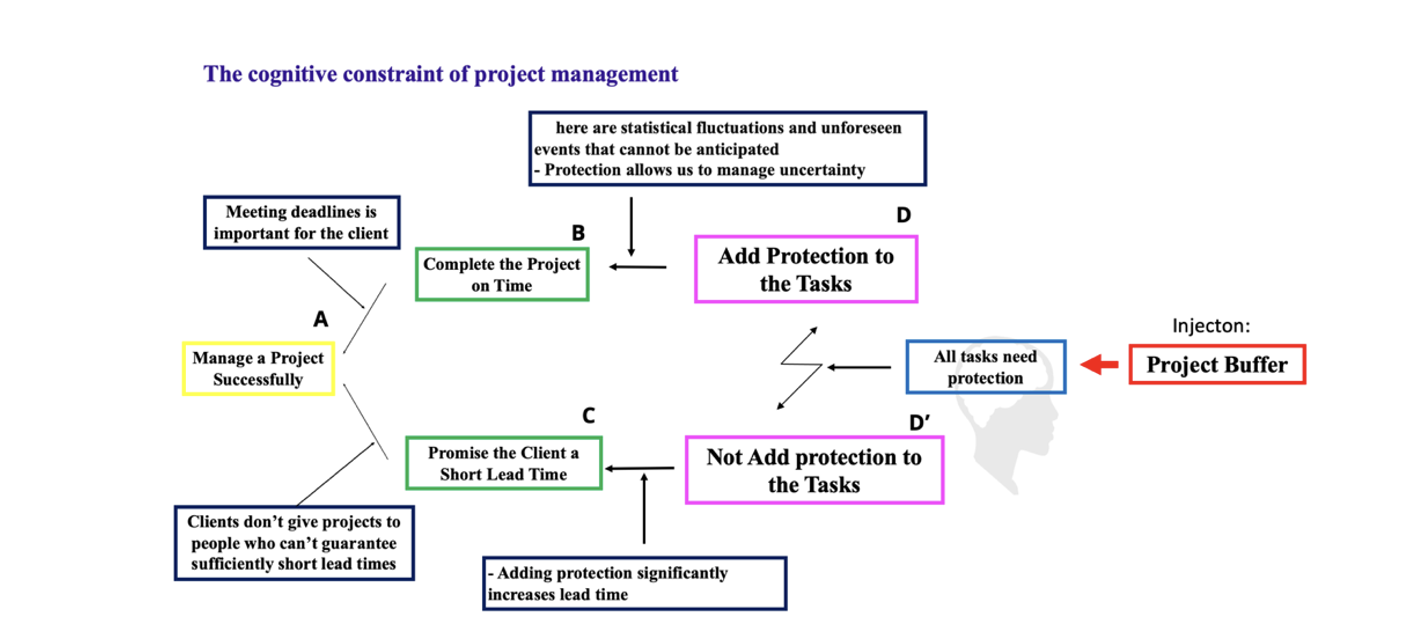
In practice, protection only needs to be added to the sequence of tasks that determines the length of the project (the critical chain, i.e. the constraint of the Project). Instead of protecting every single task in the critical chain, the protection is cumulated at the end of it in what is called the Project Buffer.

We can easily dispel any cognitive dissonance between what is presently common practice (wrong way) and what, instead, should be done (right way) by resorting to some well consolidated, universally accepted knowledge.
If we have a chain of tasks and we add protection to each single task, what is the difference between that approach versus adding the protection to the global chain?

The answer can be found in Pythagoras’ Theorem, normally taught to seventh graders (and some foundational elements of Probability taught in undergraduate courses).
The cumulated variation that affects a set of dependent tasks (Standard Deviation) decreases at the same rate of the square root of the number of tasks N:
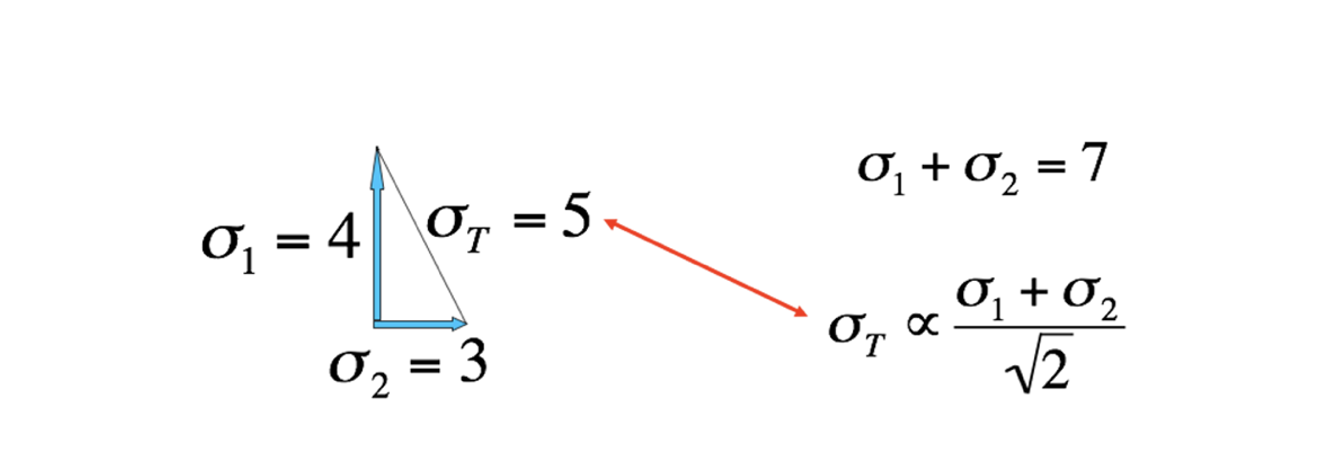
Instead of needing “4+3=7”, we need:

As a general notation, we need a protection that is:

This is how we can effectively protect the completion of a Project without unnecessarily inflating its length. Knowledge is the only cure for superstition.
Missing the point on projects
Looking at Critical Chain as a technique for managing projects means essentially missing the point. The reason why, after many years of relentless efforts to disseminate Critical Chain, tools like Microsoft Project still dominate the way projects are “managed” is that any attempt to use Critical Chain without embracing a purely systemic view of the organization is doomed to failure.
Critical Chain represents the embodiment of a vision of the organization based on pace of flow, people’s involvement and great emphasis on quality. Quality, involvement and flow are the basic philosophical pillars of the systemic organization.
To find out more about ten guided steps to a systemic leap ahead for your company, contact Angela Montgomery at intelligentmanagement@sechel.ws
SCHEDULE AN INTRODUCTORY CALL WITH US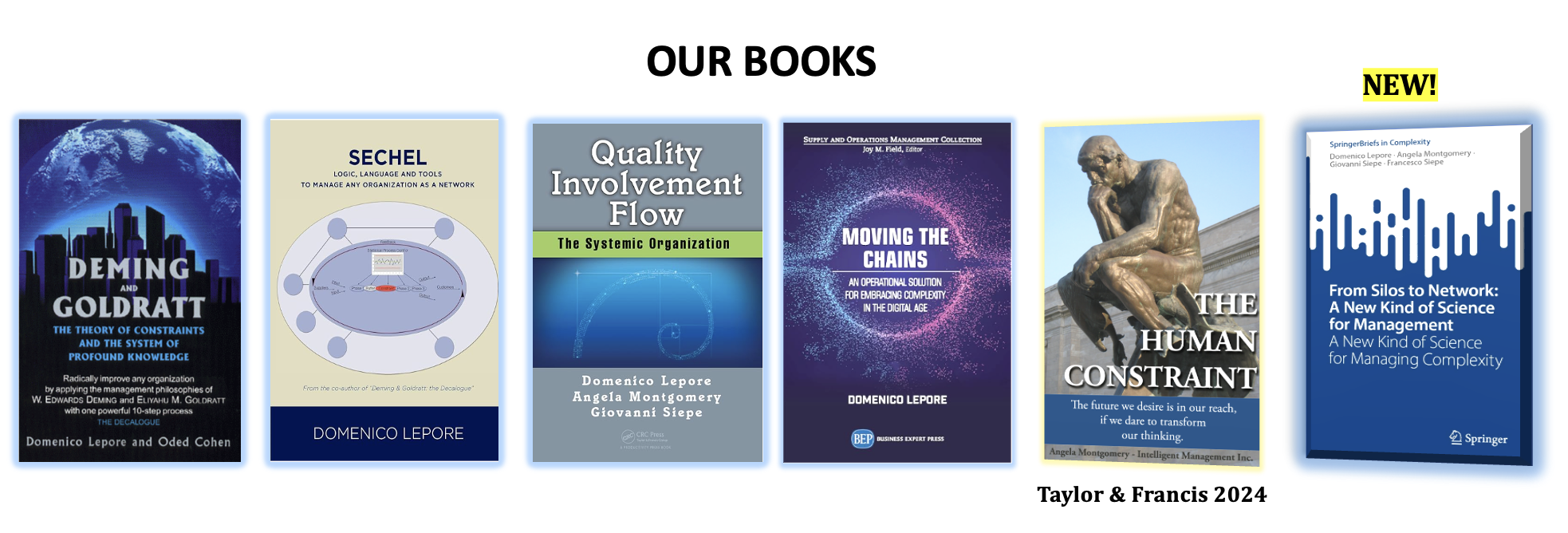
Intelligent Management works with decision makers with the authority and responsibility to make meaningful change. We have helped dozens of organizations to adopt a systemic approach to manage complexity and radically improve performance and growth for 25 years through our Decalogue management methodology. The Network of Projects organization design we developed is supported by our Ess3ntial software for multi-project finite scheduling based on the Critical Chain algorithm.
See our latest books: From Silos to Networks: A New Kind of Science for Management from Springer, Moving the Chains: An Operational Solution for Embracing Complexity in the Digital Age by our Founder Dr. Domenico Lepore, and ‘Quality, Involvement, Flow: The Systemic Organization’ from CRC Press, New York by Dr. Domenico Lepore, Dr. .Angela Montgomery and Dr. Giovanni Siepe.





Leave a Reply